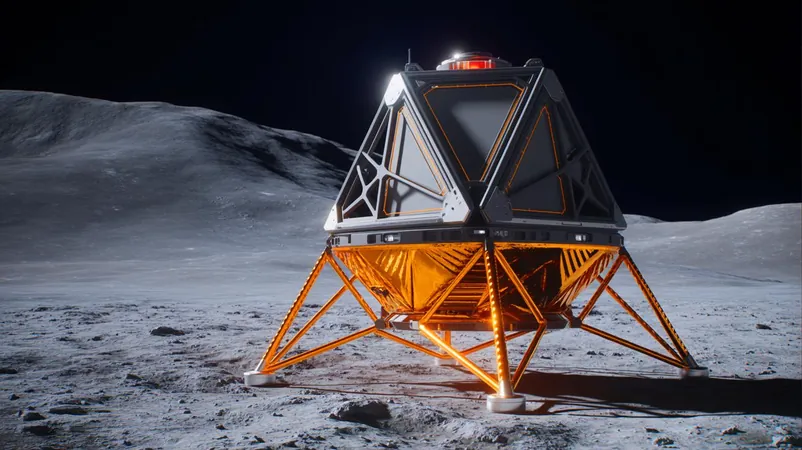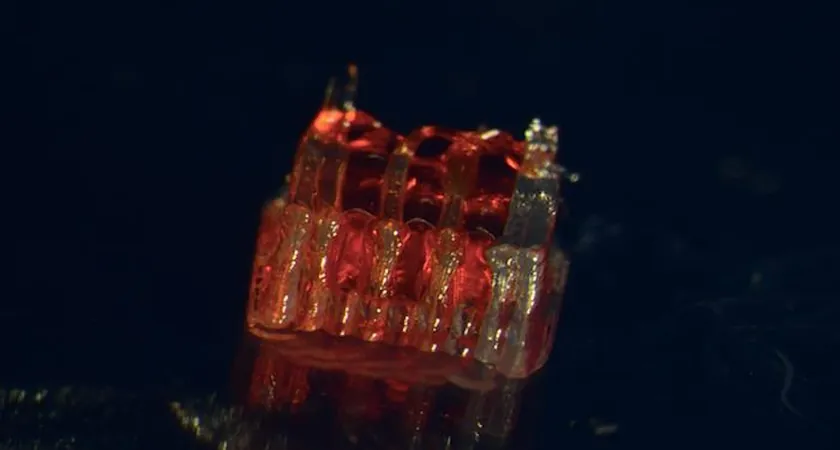
Revolutionary Design Could Save Space Missions and Robots from Disaster
2025-08-05
Author: Amelia
Unlocking the Power of the Monostable Tetrahedron
Imagine a geometric object so powerful it could transform the worlds of robotics and space travel. Meet the "Bille," a groundbreaking monostable tetrahedron that promises to tackle longstanding challenges of stability and orientation faced by spacecraft and robots. This innovative design, capable of always landing on the same face, isn't just theoretical anymore—it could be a game-changer in practical applications.
From Theory to Reality
Initially proposed in 1966 by British mathematicians, the idea of a monostable tetrahedron remained a dream until recent years. Now, thanks to a collaborative effort between a professor and an architecture student, Bille has been brought to life using advanced computer modeling and precision engineering. Weighing a mere 4.2 ounces and crafted from lightweight carbon fiber and tungsten alloy, Bille exemplifies clever design by ensuring it tips back to its stable face.
A New Dawn for Space Exploration
What's the impact of Bille on space missions? Massive! Often, rovers and landers face disastrous fates after landing on foreign surfaces, like the Intuitive Machines 2 lunar mission where the lander struggled post-landing. By incorporating a design like Bille, spacecraft could autonomously right themselves without complex mechanisms, enhancing reliability and safety. This innovative approach could minimize equipment weight while reducing the risk of mission failures.
Beyond Space: Robotic Revolution
The Bille's potential isn't confined to the cosmos. In mobile robotics, a self-stabilizing design could help robots thrive in unpredictable environments. Current robots often need complicated stabilization systems, but Bille's principles could allow for a more elegant solution—passive stabilization. This innovation would enable robots to self-correct on challenging terrains, unlocking endless possibilities from disaster response to planetary exploration.
Challenges Ahead: Scaling and Innovation
Despite Bille’s groundbreaking nature, challenges loom ahead. The current model is small and will require further research to adapt for larger-scale applications. The engineering community is keen on refining the design for various uses, but obstacles like scaling present a significant endeavor.
Shaping the Future of Engineering
As we witness the emergence of the Bille tetrahedron, we are left pondering the future it heralds for engineering in extreme environments. Could this unique design redefine how we approach spacecraft and robotics? The scientific community remains optimistic, believing that as research progresses, the answers could dramatically enhance technology both on Earth and in the vastness of space.
With Bille’s arrival, we stand on the brink of a technological frontier that promises to reshape our approaches to engineering challenges. The possibilities are limitless—how will innovation continue to evolve in the coming years?









 Brasil (PT)
Brasil (PT)
 Canada (EN)
Canada (EN)
 Chile (ES)
Chile (ES)
 Česko (CS)
Česko (CS)
 대한민국 (KO)
대한민국 (KO)
 España (ES)
España (ES)
 France (FR)
France (FR)
 Hong Kong (EN)
Hong Kong (EN)
 Italia (IT)
Italia (IT)
 日本 (JA)
日本 (JA)
 Magyarország (HU)
Magyarország (HU)
 Norge (NO)
Norge (NO)
 Polska (PL)
Polska (PL)
 Schweiz (DE)
Schweiz (DE)
 Singapore (EN)
Singapore (EN)
 Sverige (SV)
Sverige (SV)
 Suomi (FI)
Suomi (FI)
 Türkiye (TR)
Türkiye (TR)
 الإمارات العربية المتحدة (AR)
الإمارات العربية المتحدة (AR)